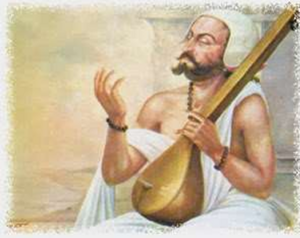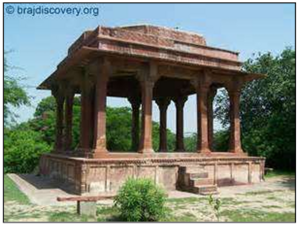Talk:Past Life and Homosexuality/Transgenderism
By Vishal Agarwal
The ātmā itself has no gender, which is determined by one’s physical body. In certain species, the distinction between the two genders is not very distinct even in their physical body. In current times, there is an enhanced awareness of one’s sexual identity as a mental choice, preference, or construct. This consideration on the role of mind - which is the storehouse of one’s emotions and choices, memories of past life, and the effects of karmas done in the past (whether in this life or the next) in determining one’s gender, beyond the binary (male-female) of physical construction, is very relevant in the context of a discussion on rebirth. PLR and other studies have shown that subjects recognize that their soul lacks a gender and that they have switched genders randomly from one life to the next,
“…What if the underlying cause of homosexuality is neither environmental nor genetic, but is instead the result of a previous opposite-sex incarnation? Since regression therapists frequently encounter cases of men remembering that they were women in their immediate past life – and of women remembering they were men – could cross-gender reincarnation have a more profound impact than might seem immediately evident? In essence, are homosexuals (and bisexuals and transgender individuals, in general) “trapped” in the wrong body, as some have complained?”[1]
As the process of gender change does not happen systematically but at random, the ātmā may inhabit the same gendered bodies (say ‘male’) for several (say ‘20’) lifetimes before switching to the opposite gender (‘female’) in its next lifetime. As a result, the accumulated mental impressions from the string of same-sex (‘male’) lifetimes will linger on in the mind even during the next/new lifetime (‘female’, physically speaking). Therefore, even though this person has changed his physical gender, his mind has not. In other words, the person, despite being a ‘female’ from a purely physical standpoint in the present life, will continue to feel attracted towards other ‘females’ as in the previous ‘20’ ‘male’ lifetimes and thereby exhibit ‘homosexual/lesbian’ tendencies.
“But what then of bisexuality and those who change sexual orientation? If a man reincarnates as a woman but, as a result of retaining a strong identification with that previous gender, remains attracted to other women, what are we to make of those who seem to be attracted to both sexes equally? Doesn’t this also seem to challenge the idea of cross-gender reincarnation?
Possibly, but then the entire issue of human sexuality is a complex one. Is it possible that some bisexual tendencies are the result of a partially successful gender shift, but not a completely successful one? In other words, when souls move from one gender to the other, it is possible that the new personality the soul has generated may take some time to reacquaint itself with its new sexuality, and that the process of gender confusion is a part of that reorientation process. If one has lived several incarnations as a man and was suddenly reincarnated as a woman, one might be forgiven for imagining the process to be something less than simple. While some souls might make the transition easily, others may have to struggle to fit into their new gender, producing a period of uncertainty in terms of sexual identity….It may take more than one incarnation into the same gender for a soul to accept its new sexual orientation (which is why a homosexual man may still recall a past life as a man, even though he still demonstrates transgender proclivities in his present life).
This is not to suggest that homosexuals or bisexuals are “flawed” in some way, or that experiencing life from the perspective of a homosexual/bisexual person may not possess certain benefits in terms of spiritual growth; it is simply to suggest that reincarnating may not be an easy or effortless process….”[2]
As seen in our normal lives, some people do not simply exhibit homosexual tendencies. They might exhibit other preferences like wearing ‘gender inappropriate’ (per social conventions) clothing, or showing ‘gender inappropriate’ mannerisms against the norms of the society around them. Some might even insist on undergoing expensive, painful, and extensive surgical procedures to change their physical gender to align with their mental gender.
“Canadian psychologist and Theosophist Charles Lazenby offered a revision to Leadbeater’s theory of having up to seven incarnations before changing gender. He believed the soul experienced six lives as the same sex, to varying degrees, and for the seventh incarnation, it would “take on the coloring” of the opposite sex before living six lives in that gender. He described this transitional phase as an “intermediate sex” in which individuals’ physical bodies belonged to one sex but their thoughts and desires belonged to the other. Today, the expression “being in touch with one’s masculine or feminine side” is an acknowledgment that our sexual nature is far more complex and perhaps less defined than previously thought, at least in those cultures where homosexuality is now socially acceptable and where transgender individuals can receive psychological and surgical support to help them deal with the conflict they perceive between their minds and anatomy. “I’ve been born in the wrong body” is a statement of fact frequently made by the latter, who make that assertion without any belief in a past life or the possibility that reincarnation may have influenced the way they feel. But that’s a possibility that Ian Stevenson was very aware of when he researched cases suggestive of reincarnation, particularly where the remembered life was in the opposite gender. In such cases, it is not uncommon for a child to insist on wearing clothes that would normally be worn by the opposite sex or to play games that would be associated with that sexual identity. He describes them as “sex change” cases, by which he means they have changed sex from one life to the next, not that they have had surgery.”[3]
Homosexuality is excoriated unequivocally in Abrahamic religions. The Bible and the Koran describe incidents of God destroying entire cities because some or all of their residents were homosexuals. Orthodox Christians and Muslims believe that homosexuals are committing great sins by their actions and are condemned to eternal hell hereafter. But perhaps because of the core belief of rebirth in the major Dhārmic traditions, there is a lack of widespread or sweeping condemnation of homosexuals. There is no history of persecution or lynching of homosexuals. Beyond the binary of ‘male’ and ‘female’ genders, Hindu sacred literature acknowledges a ‘third’ nature that includes all other sexual orientations. Furthermore, in tune with the belief that the Divine abides equally in all creatures, all have an identical and eternal spark of the Divine within themselves, it is also declared that members of the third gender are also equally Divine-
I am all, whether eunuchs, men or women. Yajurveda, Taittirīya Āraṇyaka 1.11.10
While the Sanatana Dharma emphasizes acceptance of one's physical gender as part of one's karmic journey, it does not advocate violence or persecution against those who identify differently.
The Devotion of Raskhān
A beautiful story is narrated in Vaishnava hagiographies about Sant Raskhan, a Muslim Pathan who was born close to the town of Amroha in Uttar Pradesh in northern India in 1548 CE. His original name was Sayyad Ibrahim. He had homosexual leanings and was infatuated with a young Hindu trader.
Some Vaishnavas discussed amongst themselves, “If he can fall so deeply in love with a human being, how wonderful it would be if he were to fall in love with Krishna, the most handsome one? Falling in love with Bhagavān would lead Raskhan to Moksha, whereas falling in love with a human being will not take him anywhere.” They conspired with a local vendor who sold ‘paan’ (betel leaves wrapped around some condiments) to divert Raskhan toward love for Krishna.
When Raskhan went to buy a paan from the vendor, the latter wrapped it in a piece of paper and gave it to his customer. When Raskhan unwrapped the paan, he was pleasantly surprised to see the picture of handsome Bhagavān Krishna. He asked the vendor whose picture it was. The vendor said, “Don’t you know of Krishna, our Bhagavan, the most handsome One. His mūrtis are in temples in Vrindavan.”
Raskhan decided to buy a green shawl and take it as a present for Krishna to the temple in Vrindavan. But, the priests stopped him at the entrance and said, “You cannot enter this Mandir, it is the afternoon, and the temple remains closed while the Lord rests. We request you to leave.”
Disappointed, Raskhan went away. After a few hours, when the priests unlocked the Mandir, they were shocked to see a green shawl wrapped around the shoulders of Krishna’s mūrtis, even though they had refused to accept that as a gift from Raskhan. The priests interpreted the miracle to mean that Raskhan was a true Bhakta of Krishna, and the Lord had Himself accepted the gift from the Muslim Bhakta. The priests went in search of Raskhan and found him singing bhajans in praise of Krishna on the banks of the Yamuna River nearby.
Raskhan was honored by the Vaishnavas of Vrindavan, and he chose to settle down in that area. For the rest of his life, he composed numerous verses in praise of Krishna. He also translated the Bhāgavata Purāņa into Persian and wrote verses in praise of Shiva and Durga. When he died, he was given a respectable funeral by the Vaishnava lineage. The site of his funeral is marked by a monument that is still visited for pilgrimage today.
References[edit]
- ↑ Danelek, J. Allan. Mystery of Reincarnation. Llewellyn Publications, 2005, Woodbury, Minnesota (USA). p. 49.
- ↑ Danelek, J. Allan. Mystery of Reincarnation. Llewellyn Publications, 2005, Woodbury, Minnesota (USA). pp. 50-51.
- ↑ Stemman, Roy. The Big Book of Reincarnation. Hierophant Publishing, 2012, San Antonio (Texas). pp. 119-120.


